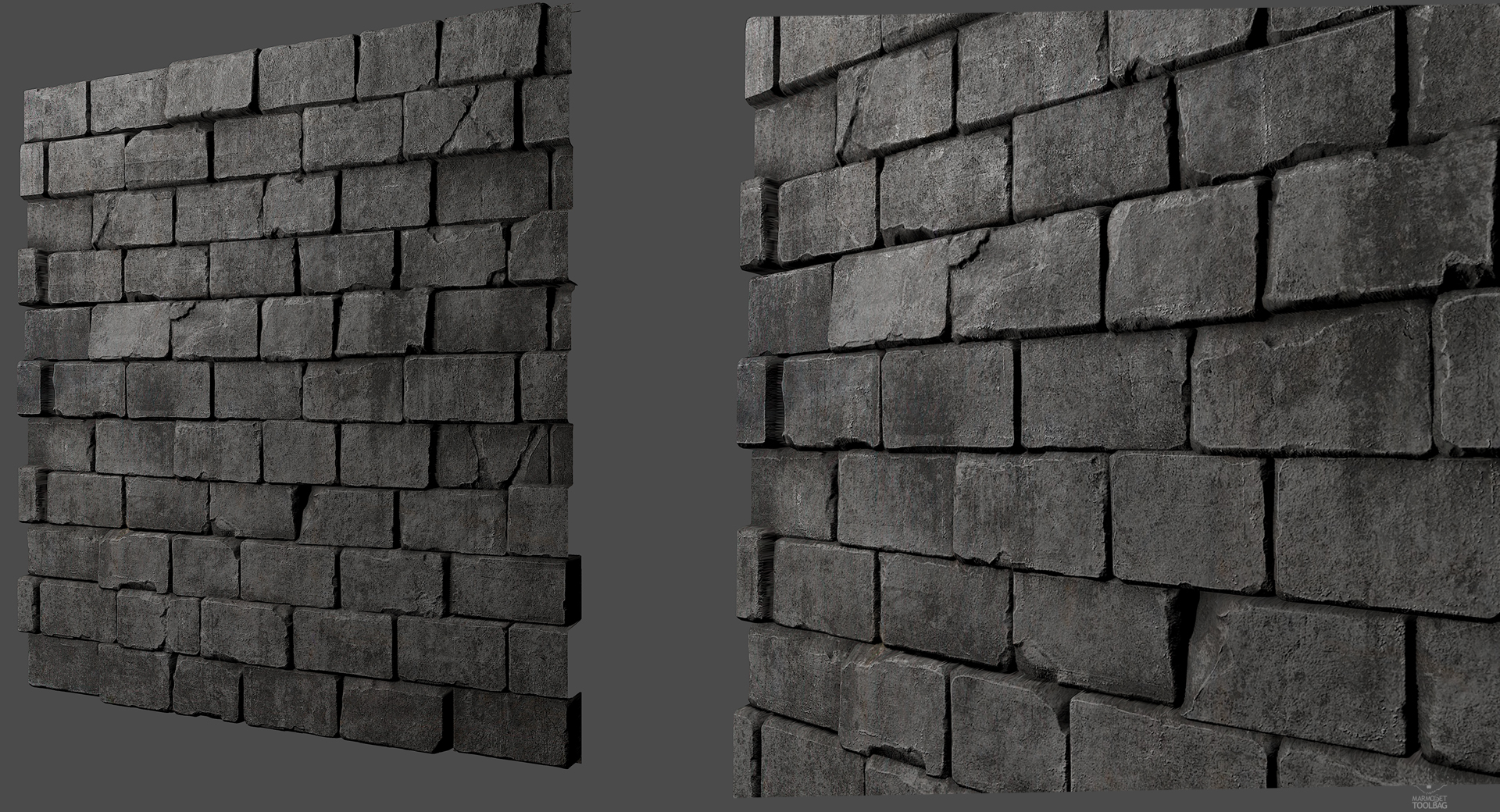The BRAWL² Tournament Challenge has been announced!
It starts May 12, and ends Oct 17. Let's see what you got!
https://polycount.com/discussion/237047/the-brawl²-tournament
It starts May 12, and ends Oct 17. Let's see what you got!
https://polycount.com/discussion/237047/the-brawl²-tournament







Replies
As far as bricks go, horizontal rows should be offset like in your refs, that's what makes a wall stand up if you've played lego.
Then there's the space between the bricks. Assuming it's cement, it should look less like the bricks are "floating" in it and more like it's just here to glue them together. Leaving the tightest room for movement and exploiting the weight that bricks push on each other is what gives the wall its poise. Right now you'd think your texture is floor slabs with dirt in between.
Before you try yourself at cracks try to improve your material definition by adding more noise and sharper edges (claypolish and noise in Zbrush are useful). Personally for cracks I would use a combination of dam standard, trim dynamic and rake, but remember that cracks shouldn't be uniform and should correspond to the strain spots in the wall.
Got any ref for the type of bricks you are trying to make?
I made another one following your advice.